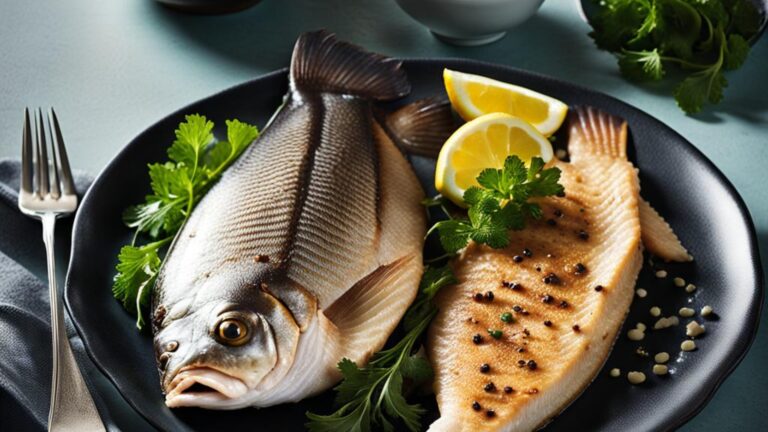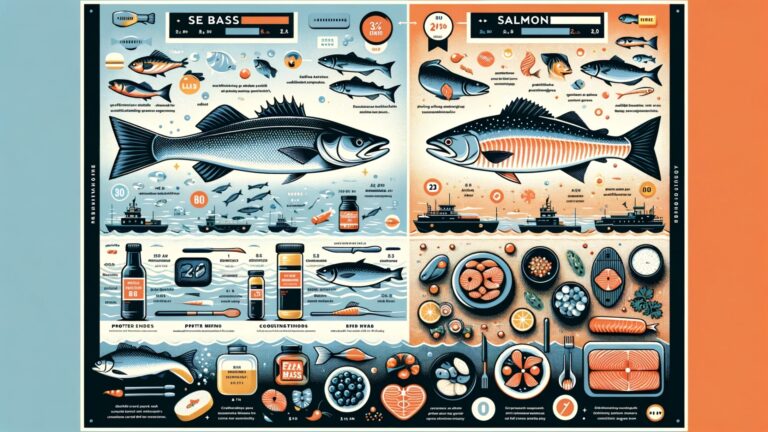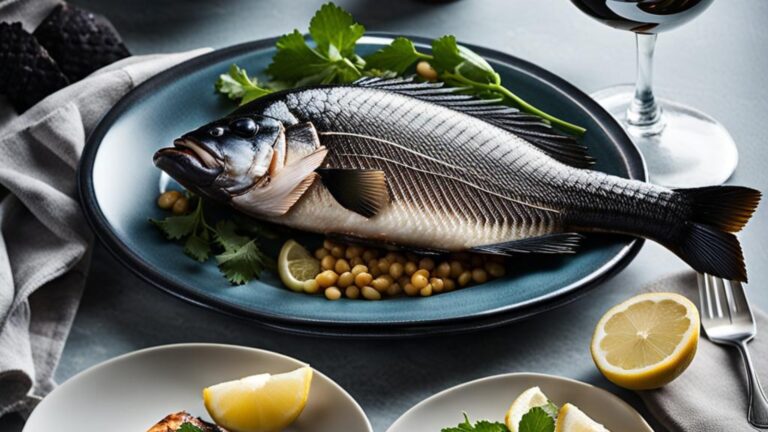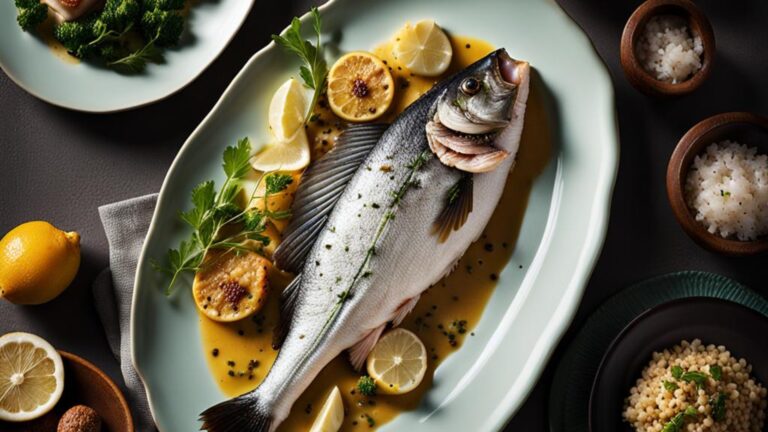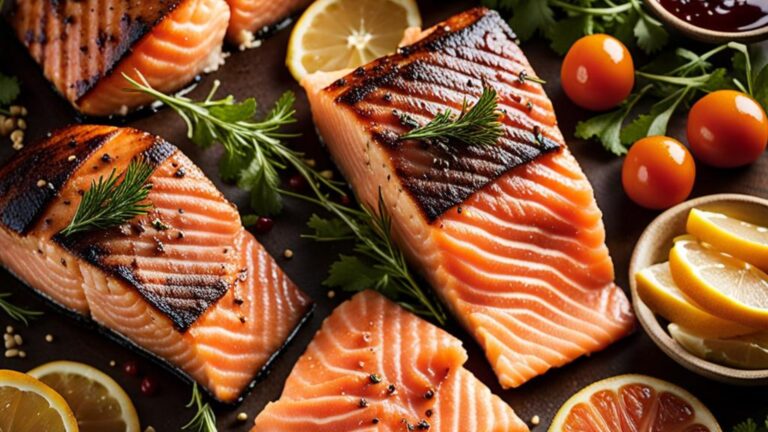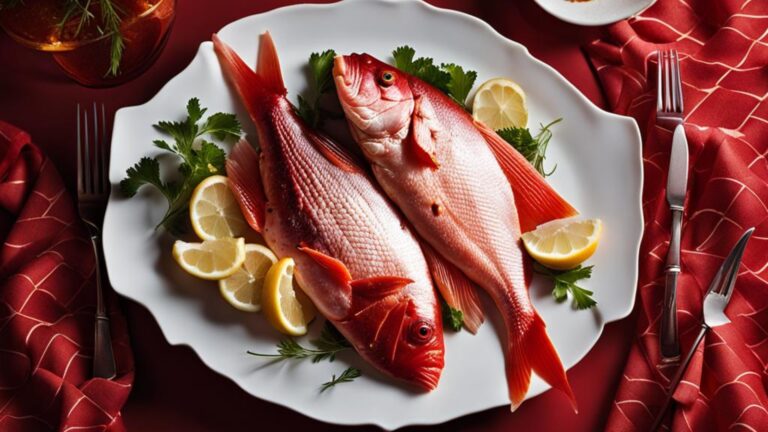
Chilean Sea Bass offers a rich, buttery flavor and delicate texture. Cod, with its mild taste and firm flesh, is versatile for cooking.
In the context of Chilean Sea Bass vs. Cod, Chilean sea bass is a more luxurious choice, while Cod fish is widely available and economical.
I will use this blog to demonstrate the similarities and differences, including the nutritional uniqueness of both fishes, their taste and use, and help you understand which fish is ideal for your taste buds.
Welcome to another discussion, where I will help you learn about the different fishes of the sea.
This will be another of my deeply researched informative articles to make learning about your favorite foods easy.
An Overview
I have gone through many trusted sources and forum conversations to gather the necessary information to make the table.
This table will provide you with an overall view of both fishes.
| Characteristic | Chilean Sea Bass | Cod |
| Family | Nototheniidae | Gadidae |
| Native Regions | South Atlantic, Pacific, Southern Ocean, and Indian Oceans. | North Atlantic, astern and western regions of the northern Pacific. |
| Size (Weight and Length) | 250 pounds, 72-84 inches | 6 – 12 pounds, and 27-34 inches |
| Body Shape | Large head and mouth, tight scales, and a broad, fork-less tail | Broad square tail fin, two anal fins, three rounded dorsal fins, and no fin spines |
| Coloration (Color) | Differ from gray to brown | Green-brown to Grey-green to red-brown |
| Diet | Crustaceans, pelagic fish, and several cephalopods | Shrimp and other small crustaceans, shellfish, herring, mackerel, capelin, and young haddock |
| As a Food | The rich, buttery flavor | Nutritious with lean protein |
| Tender, flaky texture | Contains less mercury | |
| Popular Species | N/A | Atlantic Cod, Rockfish |
| N/A | Lingcod and Black Cod | |
| Aquarium Friendly | No | No |
| Lifespan | 40 or 50 years | More than 20 years |
Chilean Sea Bass vs. Cod: Detailed Differences
Chilean Sea Bass and Cod each offer unique culinary and nutritional attributes. This comprehensive comparison delves into the detailed distinctions between these ocean-dwelling delights.

Taste and Texture
Chilean Sea Bass is celebrated for its exquisite taste profile. Its flesh boasts a luxurious, buttery flavor that practically melts in the mouth.
The delicate, tender texture further enhances its appeal, making it a prized ingredient in upscale dining establishments.
In contrast, Cod offers a milder taste with a slightly sweet note and a firm, flaky texture. This versatility makes Cod an excellent choice for a wide array of dishes.
Cod’s neutral taste is a canvas for diverse culinary creations, whether baked, battered for fish and chips, or incorporated into stews.
Nutritional Distinctions
From a nutritional standpoint, Chilean sea bass and cod bring health benefits. Chilean Sea Bass is a source of lean protein, rich in omega-3 fatty acids known for their heart-healthy properties.
Additionally, these fatty acids support general health and brain health.
Due to its deep-sea habitat, Chilean Sea Bass tends to have lower levels of mercury, making it a safer choice in terms of potential contaminants.
Cod, on the other hand, is also a nutrient-packed option. It is notably low in calories and fat while offering a significant protein content.
Cod is a good source of vitamin B12, selenium, and phosphorus, essential for various bodily functions, including maintaining healthy bones and supporting the immune system.
Cooking Applications
The culinary applications of these two fish vary, largely due to their distinctive characteristics. Chilean Sea Bass excels in dishes that require a touch of elegance and indulgence.
Its rich taste and delicate texture shine in fine dining presentations, where it can be the centerpiece of a sophisticated meal.
Cod’s versatility lends itself to a broader spectrum of recipes. Its mild flavor blends well with various flavors, making it a go-to option for amateur and professional chefs.
Whether you’re creating a hearty fish stew, crafting flavorful fish tacos, or simply pan-searing it with a dash of lemon, Cod’s adaptability is a testament to its culinary prowess.
Availability and Economics
One notable difference between these fish is their availability and cost. Chilean Sea Bass is considered a luxury food item, often commanding a higher price due to its limited distribution and premium quality.
This exclusivity makes it a sought-after option for special occasions and gourmet dining experiences.
Chilean Sea Bass vs. Cod: As a Food
Delving into the culinary realm, the distinction between Chilean Sea Bass and Cod becomes a compelling exploration of flavors and gastronomic potential.
The Chilean Sea Bass boasts a sumptuous, buttery essence and a delicate texture.
In contrast, Cod stands as a versatile canvas for culinary creativity. Its mild flavor harmonizes seamlessly with a spectrum of seasonings. Its firm flesh ensures a satisfying bite in every preparation.
Cod’s adaptability shines through, from classic fish and chips to elaborate gourmet dishes.
While the Chilean Sea Bass radiates luxury, the Cod embraces accessibility. The former is a lavish choice for special occasions, and the latter is an everyday staple that marries well with various cooking techniques.
Nutritional Differences Between Chilean Sea Bass and Cod
Regarding nutritional distinctions, Chilean Sea Bass and Cod diverge in ways that impact dietary considerations.
Chilean Sea Bass carries a more indulgent caloric load, with 234 calories compared to Cod’s leaner 82 calories.
The protein content of Chilean Sea Bass is robust in both fishes, though Cod takes a slight lead with 20 grams versus Chilean Sea Bass’s 16 grams, making it an appealing choice for those prioritizing protein intake.
In terms of fat, Chilean Sea Bass presents a higher total fat content at 19 grams, while Cod offers a leaner alternative with 0.5 grams per 4-ounce serving.
This lean profile extends to saturated fat, with Cod providing merely 0.1 grams compared to Chilean Sea Bass’s 0.44 grams, reflecting its potential for heart-conscious diets.
Both fishes contribute significantly to daily vitamin B12 needs, yet Cod holds a slight advantage by offering 30% of the daily value, compared to Chilean Sea Bass’s 20%. While iron content remains unspecified, these nutritional disparities emphasize each fish’s versatile options.
Nutritional Table
| Nutrient | Chilean Sea Bass | Cod |
| Calories | 234 | 82 |
| Protein | 16 g | 20 g |
| Total Fat | 19 g | 0.5 g per 4-ounce |
| Saturated Fat | 0.44 g | 0.1 g |
| Cholesterol | 38 mg | 43 mg |
| Sodium | 94 mg | 54 mg |
| Iron | Not Specified | Not Specified |
| Vitamin B12 | 20 % of your daily value | 30% of your daily value |
Similarities Between Chilean Sea Bass and Cod
In the diverse tapestry of seafood, Chilean Sea Bass and Cod share several common threads that bind them as beloved choices.
Despite their distinct flavors and textures, these two ocean dwellers offer intriguing parallels:
- Both species provide excellent sources of lean protein. They offer essential nutrients such as vitamin B12 and selenium, vital for metabolic functions and immune support.
- Both Chilean Sea Bass and Cod lend themselves to various cooking methods. Their adaptable nature allows them to integrate into various global cuisines seamlessly.
- Both fishes contain omega-3 fatty acids, promoting heart health and reducing inflammation.
- Chilean Sea Bass and Cod have secured their places as sought-after seafood options in upscale restaurants and home kitchens.
- Chilean Sea Bass and Cod offers a low-fat protein source, supporting weight management and cardiovascular health. Thus, both fish contribute to a balanced diet.
- Both fishes have established themselves as staples in various cultural cuisines. They are enjoyed worldwide.
Conclusion
I always find myself captivated by the intriguing contrasts and shared attributes of Chilean Sea Bass and Cod.
As I savor the rich, buttery essence of the Chilean Sea Bass and appreciate its delicate texture, I also recognize the dependable versatility that Cod brings to the table.
Both fishes have proven their worth as nutritional powerhouses, capable of enhancing a balanced diet. I enjoy both fishes as they remind me of the ocean’s bounty and endless possibilities.
I suggest you try both fish as both fish have their taste. They will enhance your experience as a food lover.

